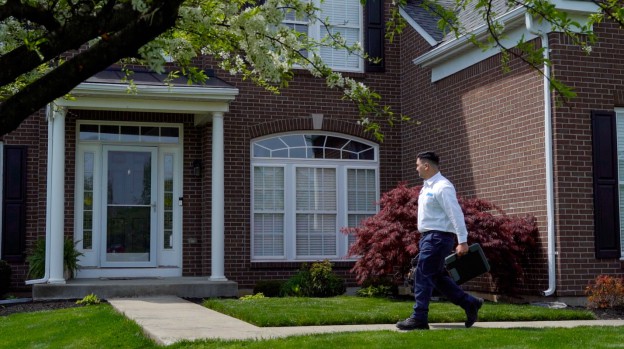Your plumbing is one of the most important systems in your home. With a hardworking system, plumbing issues are an inevitable part of homeownership, but some are more of a disaster than an inconvenience.
A burst pipe is one such problem. A burst pipe can cause water damage, expensive repairs, and a ton of stress and disruption. Knowing how to respond quickly and effectively can dramatically minimize the damage and expense.
If you’re wondering “what should I do if a plumbing pipe bursts?”, you’ve come to the right place. Here are the steps to take when a pipe bursts, how to locate the source, and when to call in a professional, all from the experts at Swan Denver.
First and Foremost, Recognize the Signs of a Burst Pipe
The first step with a burst pipe is always locating the source of the issue. Here are some common signs of a burst pipe:
- Water leak: If you suddenly notice a substantial water leak in your home, it could be due to a burst pipe. Water may be spraying or gushing from the affected area.
- Water stains: Look for water stains on walls, ceilings, or floors. These stains may appear as discolored patches or even bubbling paint or wallpaper.
- Reduced water pressure: A burst pipe can result in decreased water pressure throughout your home, making it difficult to get enough pressure to use faucets and appliances.
- Odd noises: If a pipe bursts, you may hear strange noises like hissing or rushing water, which could be coming from a burst pipe.
- Damp or wet areas: If you see damp or wet areas in places they shouldn’t be, such as under sinks, in cabinets, or on the floor, it may indicate a burst pipe.
- Strange odors: Sometimes, the water from a burst pipe can carry unpleasant odors or lead to the growth of mold and mildew, which emit musty smells.
Immediate Steps to Take
Once you realize you have a burst pipe, you have to move quickly to prevent damage. Here are the steps to follow:
- 1. Shut Off the Water Supply
Shut off the main water supply immediately. Locate the main water valve, which is usually in the basement, utility room, or outside near the meter. It’s best to learn where your water main valve is before you have a problem.
Once you locate it, turn the valve clockwise to shut off the water. If you’re unsure of where the valve is or which way to turn it off, it’s best to get familiar in advance.
- 2. Drain the Faucets
After you shut off the main water supply, open all the faucets in your home to drain any remaining water from the pipes. This step will help relieve pressure in the system and minimize the risk of further damage.
- 3. Turn Off Electricity
If the burst pipe is near electrical outlets, appliances, or wiring, it’s crucial to turn off the electricity to the affected area. You may even need to turn off the electricity to the entire house. Safety should be a top priority in a water-related emergency.
- 4. Collect Water
Place buckets, pots, or other containers under the leaking water to collect as much as possible. This will help prevent additional water damage to your belongings and home.
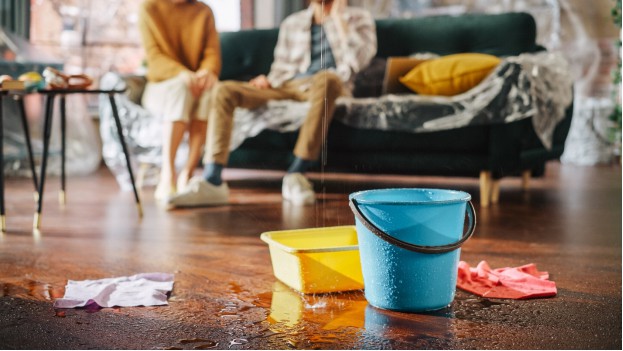
- 5. Address Electrical Hazards
If water has come into contact with electrical outlets, switches, or appliances, do not touch any electrical components until the power is turned off and a professional electrician has assessed the situation. Water and electricity are a dangerous combination.
Next Step: Locating the Source of the Burst
Identifying the source of the burst pipe is essential for effective repairs. Pipes can burst for various reasons, including freezing, corrosion, excessive water pressure, or physical damage.
Here are some steps to take to help you locate the source of the burst:
- Follow the Water
Trace the path of the water to determine where it is coming from. Look for the most obvious spot and inspect the surrounding area for clues. Be aware that water can travel along pipes, so the actual burst pipe may not be near the signs you can see.
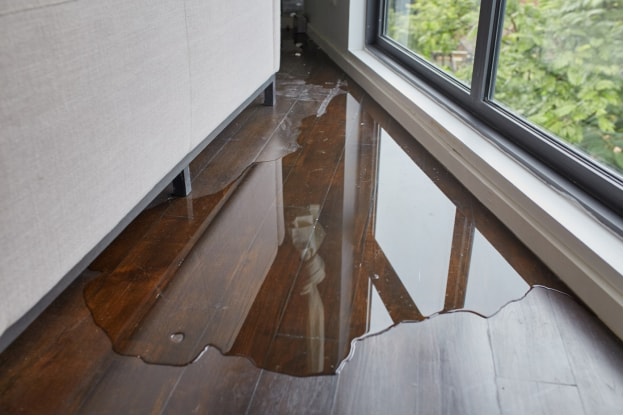
- 2. Inspect Visible Pipes
Examine any visible plumbing pipes in your home for signs of damage. Pay close attention to joints, connections, and areas where pipes run through walls or floors.
- 3. Check the Basement or Crawl Space
If you have a basement or crawl space, inspect these areas for leaks or standing water. Burst pipes are more likely to occur in the lower sections of your house because of colder temperatures.
- 4. External Pipes
Check the pipes outside your home, particularly if you’ve had some cold weather. Frozen pipes are a common issue that can lead to burst pipes. You can prevent this issue with insulated pipes.
- 5. Professional Inspection
If you can’t locate the source of the burst or it’s inaccessible, you may need to contact a professional plumber. They have the experience and tools to identify and repair the issue efficiently.
Perform Temporary Repairs
In some cases, you may be able to perform temporary repairs to mitigate further damage before a plumber arrives. Keep in mind that these are temporary solutions, so you will still need to bring in a professional for aplumbing repair.
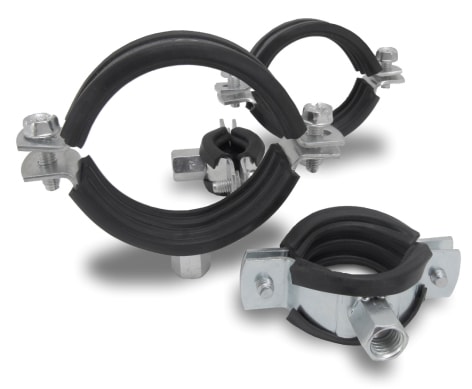
- Epoxy putty:Epoxy putty can be used to seal small cracks or holes in the pipe. Make sure the affected area is dry before applying the putty and follow the manufacturer’s instructions for the best results.
- Pipe clamps or sleeves:Pipe clamps or sleeves can be used to cover large cracks in your pipes. Ensure that the clamp or sleeve is appropriately sized for the pipe and that it is securely fastened.
- Pipe tape:Pipe repair tape is designed to provide a temporary seal on leaking pipes. Wrap the tape tightly around the affected area according to the product’s instructions.
- Rubber and hose clamps:Rubber and hose clamps can be used to create a temporary seal on a burst pipe. Place a rubber patch over the hole and secure it with hose clamps.
- Plastic pipe repair kits:Some hardware stores sell plastic pipe repair kits that can be effective in sealing burst pipes. These kits typically include various components for creating a temporary fix.
Again, temporary repairs are just to minimize damage while you wait for a professional plumber. They will not permanently fix the issue.
When Should I Call a Professional Plumber?
While temporary repairs can provide some immediate relief, it’s important to call a professional plumber as soon as possible to assess the damage and carry out the necessary repairs.
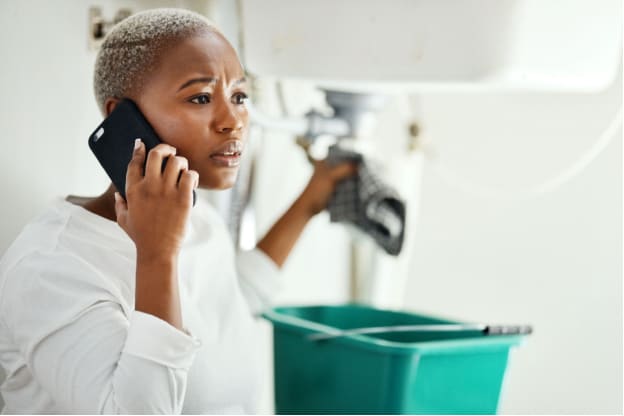
- Extensive damage:If the burst has caused extensive damage to your home, including structural issues, flooring damage, or electrical system problems, it’s crucial to seek the help of a professional plumber.
- Repeated leaks:If your plumbing system has experienced multiple leaks or bursts in the past, it could indicate that there are underlying problems that require professional inspection and repair.
- Frozen pipes:In cold climates, frozen pipes are a common cause of bursts. A plumber can evaluate the extent of the damage and recommend preventative measures to avoid future freezing.
- Older pipes:If your home has old or deteriorating pipes, they may be more prone to a burst. A professional plumber can assess the condition of your plumbing system and perform repairs or upgrades.
- Safety concerns:If there are safety concerns related to the burst pipe, such as electrical hazards or the potential for mold growth, a plumber can address these issues safely.
- Complex repairs:Burst pipes aren’t always a simple fix. If your pipe needs complex repairs, it’s important to call a plumber.
How to Prevent a Burst Pipe
Preventing a burst pipe is always better than dealing with the aftermath. Here are some preventative measures to reduce the risk of a pipe burst:
- Insulate your pipes:Make sure to insulate exposed pipes to protect them from freezing, especially if they’re located in areas of your home that don’t get a lot of heat. Pipe insulation is often enough to keep the pipes warm during winter.
- Maintain proper heat:Maintaining a consistent indoor temperature during the winter, even when you’re away from home, can prevent pipes from freezing and bursting.
- Regular inspections:Periodically inspect your plumbing system for signs of wear, corrosion, or damage. Pay attention to the fittings, connections, and any exposed pipes.
- Fix leaks promptly:Don’t ignore minor leaks or drips. Address them as soon as they come up to prevent further damage.
- Water pressure:Ensure that your home’s water pressure is within the recommended range. Excessive water pressure can strain pipes, leading to bursts.
- Emergency kit:Have a plumbing emergency kit on hand, including pipe repair tape, pipe clamps, and a pipe wrench, for quick action in the case of a plumbing emergency.
- Get professional inspections:Schedule annual inspections with a professional plumber to assess the condition of your plumbing system and make necessary repairs or upgrades.
Protect Your Home from Burst Pipes
